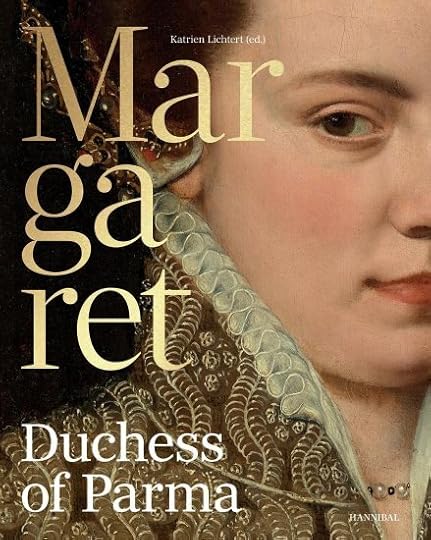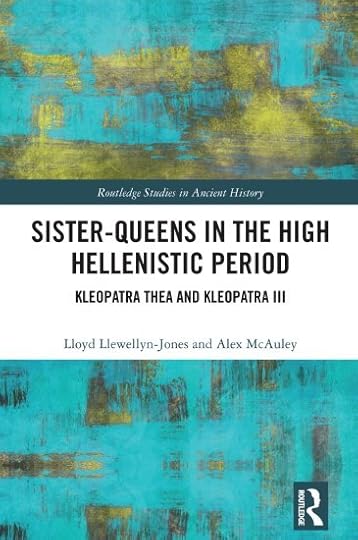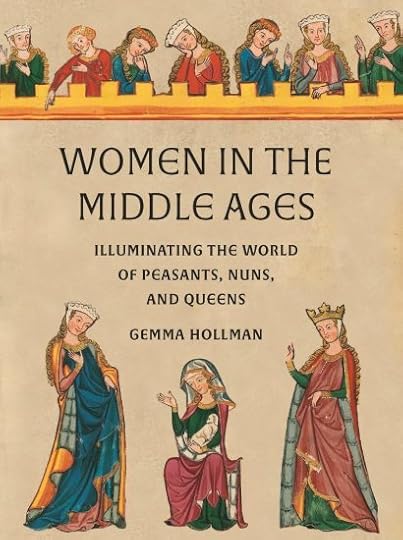Moniek Bloks's Blog, page 34
October 29, 2024
Queen Artemisia I of Halicarnassus – The first female admiral in history
Queen Artemisia I of Halicarnassus was a warrior queen during the Persian Empire.[1] She was known as the first woman in history to “command a ship.” [2] She greatly influenced King Xerxes of the Persian Empire.[3] She has been praised by ancient historians for her bravery and intelligence.[4]
Queen Artemisia I of Halicarnassus was most likely born during circa 520-515 B.C.E.[5] Her father was King Lygdamos I of Halicarnassus.[6] He was of Greek-Acadian origin.[7] Her mother is unknown, but historians believe that she was of Cretan origins.[8] Historians also believe that Artemisia was an only child.[9] She was to inherit her father’s throne of Halicarnassus.[10] Historians believe that Artemisia married in her late teens.[11] Her husband’s name and his origins are unknown.[12] He died after she gave birth to a son named Pisiadelis.[13]
In 480 B.C.E., Artemisia became queen regnant of Halicarnassus.[14] In that same year, Queen Artemisia I commanded five ships under King Xerxes’s military campaign against the Greeks.[15] Herodotus claims that Queen Artemisia I held a rank equal to King Xerxes’s military generals and “that her ships were some of the best in the Persian fleet.” [16] Queen Artemisia I also won King Xerxes’s admiration and respect.[17] She influenced him greatly and was known for her “decisiveness and intelligence.” [18]
Queen Artemisia I fought in the naval battles of Artemision and Thermopylae.[19] Before the Battle of Salamis, Queen Artemisia I unsuccessfully tried to prevent King Xerxes from fighting the battle.[20] However, the Battle of Salamis proved to be disastrous.[21] Queen Artemisia I managed to sink a ship and escape.[22] This made King Xerxes cry out, “My men have become women and my women men.” [23]
After the defeat at Salamis, Queen Artemisia I advised King Xerxes to leave Greece.[24] She also took King Xerxes’s sons to Ephesus.[25] Her life afterwards is unknown. One source claims that she died by throwing herself from a cliff because of her unrequited love for a younger man named Dardanus.[26] Historians believe that Queen Artemisia I died in 460 B.C.E.[27] This is because that is the year her son, Pisiadelis, became King of Halicarnassus.[28]
Artemisia I was queen regnant of Halicarnassus. She was a successful ruler because she managed to hold the throne until her death. She was also a skilled admiral. She persuaded King Xerexes to abandon his military expedition in Greece. It is no wonder why ancient historians have praised her accomplishments. There are very few known facts about this famous ancient queen. Hopefully, more details of her will come to light.
Sources:
Baker, O. R. (2023). “Artemisia: An Admirable Admiral”. Athens Journal of Humanities & Arts, 10, pp. 55-72.
“Briefing: Artemisia I”. (2005, February 10). Herald [Glasgow, Scotland], p. 19.
Dawson Maria-Dimitra, “Artemisia I”, 2007, Encyclopaedia of the Hellenic World, Asia Minor, Retrieved on May 28, 2024 from http://www.ehw.gr/l.aspx?id=7570.
Mark, J. J.(2023, June 29). “Halicarnassus.” World History Encyclopedia. Retrieved on May 28, 2024 from https://www.worldhistory.org/halicarn....
Uglow, J. S., Hinton, F., & Hendry, M. (Eds.). (2005). Artemisia of Halicarnassus. In The Palgrave Macmillan Dictionary of Women’s Biography (4th ed.). Macmillan Publishers Ltd. Retrieved on May 28, 2024 from https://search.credoreference.com/art....
[1] “Briefing: Artemisia I.”, 2005
[2] “Briefing: Artemisia I.”, 2005, para. 3
[3] Dawson, 2001
[4] Dawson, 2001
[5] Baker, 2023
[6] Baker, 2023
[7] Baker, 2023
[8] Baker, 2023
[9] Baker, 2023
[10] Baker, 2023
[11] Baker, 2023
[12] Baker, 2023
[13] Baker, 2023
[14] Dawson, 2001
[15] Dawson, 2001
[16] Dawson, 2001, para. 2
[17] Dawson, 2001
[18] Dawson, 2001, para. 2
[19] Dawson, 2001; Baker, 2023
[20] Dawson, 2001
[21] Dawson, 2001
[22] Dawson, 2001
[23] Dawson, 2001, para. 4
[24] Dawson, 2001
[25] Dawson, 2001
[26] Uglow, Hinton, and Henry (Eds.), 2005
[27] Mark, 2023
[28] Mark, 2023
The post Queen Artemisia I of Halicarnassus – The first female admiral in history appeared first on History of Royal Women.
October 27, 2024
Kong Bo Ji -The powerful and lustful Princess who caused disorder for generations in the State of Wei
Princess Kong Bo Ji has had a negative reputation in Chinese history. Ancient chroniclers have described her as “a lustful concubine.”[1] Her lust has caused disorder in her State of Wei.[2] However, Kong Bo Ji was a very powerful Princess. She was able to depose one ruler and enthrone another. Her power has been depicted as a threat in ancient China.[3]
Princess Kong Bo Ji was born in the fifth century B.C.E. She lived during the Spring and Autumn period, which lasted from 771 to 453 B.C.E. During this period, Chinese states were declaring their own independence from the ruling Zhou Dynasty to form their own dynasties.[4] She was a Princess of Wei.[5] Her father was Duke Ling of Wei. Her mother is unknown.[6] She had a younger brother named Prince Kuai Kui (the future Duke Zhuang II of Wei).
Princess Kong Bo Ji married a Wei minister named Kong Wenzi. She bore a son named Kong Li. In 493 B.C.E., Kong Bo Ji’s father, Duke Ling of Wei, died. Her brother, Prince Kuai Kui, was the heir apparent of the State of Wei.[7] However, he was not chosen to be the next Duke of Wei.[8] It was Prince Kuai Kui’s son (who was also Princess Kong Bo Ji’s nephew) who was chosen to be the next Duke of Wei instead.[9] Prince Kuai Kui’s son ascended the State of Wei’s throne as Duke Chu of Wei. Duke Chu of Wei appointed Princess Kong Bo Ji’s son, Kong Li, as Minister of the Ancestral Temple.[10]
Kong Wenzi died.[11] Princess Kong Bo Ji began to have an affair with a minor official named Hun Liangfu.[12] Princess Kong Bo Ji plotted with Hun Liangfu to depose Duke Chu of Wei and make Prince Kuai Kui, the next Duke of Wei instead.[13] In 481 B.C.E., Prince Kuai Kui and Hun Liangfu dressed as women and entered Princess Kong Bo Ji’s chambers.[14] Princess Kong Bo Ji forced Kong Li at spearpoint to help put her brother on the throne.[15] The four of them managed to expel Duke Chu of Wei.[16] Then, they installed Prince Kuai Kui on the Wei throne as Duke Zhuang II.[17]
The first action that Duke Zhuang II of Wei did was to execute Hun Liangfu.[18] In 478 B.C.E., Duke Zhuang II of Wei died. In 477 B.C.E., Duke Chu was restored to the State of Wei throne. In 476 B.C.E., Duke Chu of Wei executed Princess Kong Bo Ji.
Princess Kong Bo Ji has had a negative reputation among ancient Chinese historians.[19] Ancient chroniclers have depicted her as the Princess who caused “disorder among five generations”[20] and also caused her own downfall.[21] In Biographies of Eminent Women, her biography is categorized in “Biographies of Pernicious and Depraved Women.”[22] Thus, she continued to be reviled for over two thousand years. However, modern historians have seen Princess Kong Bo Ji in a more sympathetic light. Princess Kong Bo Ji was very powerful and influential.[23] She used her power for her own gain. She was able to manipulate and influence events in ancient China.[24] Thus, she was seen as a political threat that should be eliminated.[25] Her story has been used by Confucian scholars for thousands of years to show that women should never be able to wield immense power.[26]
Sources:
Cook, C. A. (2015). “Kong Bo Ji”. Biographical Dictionary of Chinese Women: Antiquity Through Sui, 1600 B.C.E. – 618 C.E. (L. X. H. Lee, Ed.; A. D. Stefanowska, Ed.; S. Wiles, Ed.). NY: Routledge. pp. 38-40.
Eno, R. (2010). 1.7. Spring and Autumn China (771-453). Indiana University, PDF.
Liu, X., Kinney, A. B. (2014). Exemplary Women of Early China: The Lienü Zhuan of Liu Xiang. United Kingdom: Columbia University Press.
[1] Cook, 2015, p. 40
[2] Cook, 2015
[3] Cook, 2015
[4] Eno, 2010
[5] Cook, 2015
[6] Cook, 2015
[7] Liu & Kinney, 2014
[8] Liu & Kinney, 2014
[9] Liu & Kinney, 2014
[10] Cook, 2015
[11] Cook, 2015
[12] Liu & Kinney, 2014
[13] Liu & Kinney, 2014
[14] Liu & Kinney, 2014
[15] Cook, 2015
[16] Cook, 2015
[17] Cook, 2015
[18] Liu & Kinney, 2014
[19] Cook, 2015
[20] Cook, 2015; p. 40
[21] Cook, 2015
[22] Cook, 2015, p. 39
[23] Cook, 2015
[24] Cook, 2015
[25] Cook, 2015
[26] Cook, 2015
The post Kong Bo Ji -The powerful and lustful Princess who caused disorder for generations in the State of Wei appeared first on History of Royal Women.
Kang Bo Ji -The powerful and lustful Princess who caused disorder for generations in the State of Wei
Princess Kong Bo Ji has had a negative reputation in Chinese history. Ancient chroniclers have described her as “a lustful concubine.”[1] Her lust has caused disorder in her State of Wei.[2] However, Kong Bo Ji was a very powerful Princess. She was able to depose one ruler and enthrone another. Her power has been depicted as a threat in ancient China.[3]
Princess Kong Bo Ji was born in the fifth century B.C.E. She lived during the Spring and Autumn period, which lasted from 771 to 453 B.C.E. During this period, Chinese states were declaring their own independence from the ruling Zhou Dynasty to form their own dynasties.[4] She was a Princess of Wei.[5] Her father was Duke Ling of Wei. Her mother is unknown.[6] She had a younger brother named Prince Kuai Kui (the future Duke Zhuang II of Wei).
Princess Kong Bo Ji married a Wei minister named Kong Wenzi. She bore a son named Kong Li. In 493 B.C.E., Kong Bo Ji’s father, Duke Ling of Wei, died. Her brother, Prince Kuai Kui, was the heir apparent of the State of Wei.[7] However, he was not chosen to be the next Duke of Wei.[8] It was Prince Kuai Kui’s son (who was also Princess Kong Bo Ji’s nephew) who was chosen to be the next Duke of Wei instead.[9] Prince Kuai Kui’s son ascended the State of Wei’s throne as Duke Chu of Wei. Duke Chu of Wei appointed Princess Kong Bo Ji’s son, Kong Li, as Minister of the Ancestral Temple.[10]
Kong Wenzi died.[11] Princess Kong Bo Ji began to have an affair with a minor official named Hun Liangfu.[12] Princess Kong Bo Ji plotted with Hun Liangfu to depose Duke Chu of Wei and make Prince Kuai Kui, the next Duke of Wei instead.[13] In 481 B.C.E., Prince Kuai Kui and Hun Liangfu dressed as women and entered Princess Kong Bo Ji’s chambers.[14] Princess Kong Bo Ji forced Kong Li at spearpoint to help put her brother on the throne.[15] The four of them managed to expel Duke Chu of Wei.[16] Then, they installed Prince Kuai Kui on the Wei throne as Duke Zhuang II.[17]
The first action that Duke Zhuang II of Wei did was to execute Hun Liangfu.[18] In 478 B.C.E., Duke Zhuang II of Wei died. In 477 B.C.E., Duke Chu was restored to the State of Wei throne. In 476 B.C.E., Duke Chu of Wei executed Princess Kong Bo Ji.
Princess Kang Bo Ji has had a negative reputation among ancient Chinese historians.[19] Ancient chroniclers have depicted her as the Princess who caused “disorder among five generations”[20] and also caused her own downfall.[21] In Biographies of Eminent Women, her biography is categorized in “Biographies of Pernicious and Depraved Women.”[22] Thus, she continued to be reviled for over two thousand years. However, modern historians have seen Princess Kong Bo Ji in a more sympathetic light. Princess Kong Bo Ji was very powerful and influential.[23] She used her power for her own gain. She was able to manipulate and influence events in ancient China.[24] Thus, she was seen as a political threat that should be eliminated.[25] Her story has been used by Confucian scholars for thousands of years to show that women should never be able to wield immense power.[26]
Sources:
Cook, C. A. (2015). “Kong Bo Ji”. Biographical Dictionary of Chinese Women: Antiquity Through Sui, 1600 B.C.E. – 618 C.E. (L. X. H. Lee, Ed.; A. D. Stefanowska, Ed.; S. Wiles, Ed.). NY: Routledge. pp. 38-40.
Eno, R. (2010). 1.7. Spring and Autumn China (771-453). Indiana University, PDF.
Liu, X., Kinney, A. B. (2014). Exemplary Women of Early China: The Lienü Zhuan of Liu Xiang. United Kingdom: Columbia University Press.
[1] Cook, 2015, p. 40
[2] Cook, 2015
[3] Cook, 2015
[4] Eno, 2010
[5] Cook, 2015
[6] Cook, 2015
[7] Liu & Kinney, 2014
[8] Liu & Kinney, 2014
[9] Liu & Kinney, 2014
[10] Cook, 2015
[11] Cook, 2015
[12] Liu & Kinney, 2014
[13] Liu & Kinney, 2014
[14] Liu & Kinney, 2014
[15] Cook, 2015
[16] Cook, 2015
[17] Cook, 2015
[18] Liu & Kinney, 2014
[19] Cook, 2015
[20] Cook, 2015; p. 40
[21] Cook, 2015
[22] Cook, 2015, p. 39
[23] Cook, 2015
[24] Cook, 2015
[25] Cook, 2015
[26] Cook, 2015
The post Kang Bo Ji -The powerful and lustful Princess who caused disorder for generations in the State of Wei appeared first on History of Royal Women.
October 26, 2024
Book News Week 44
Book News week 44 – 28 October – 3 November 2024

The Tragic Life of Lady Jane Grey
Hardcover – 31 October 2024 (US)

Elizabeth of York and the Birth of the Tudor Dynasty: Uniting the Roses
Hardcover – 30 October 2024 (UK)

Daughters of Edward I
Paperback – 30 October 2024 (UK)

Margaret, Duchess of Parma: The Emperor’s Daughter between Power and Image
Hardcover – 29 October 2024 (UK)

Kings, Queens and Fallen Monarchies: Royal Dynasties of Interwar Europe
Hardcover – 30 October 2024 (UK)

Medieval Women
Hardcover – 31 October 2024 (US)

Sister-Queens in the High Hellenistic Period: Kleopatra Thea and Kleopatra III (Routledge Studies in Ancient History)
Paperback – 28 October 2024 (US & UK)

The Most Maligned Women in History
Hardcover – 30 October 2024 (UK)

Plantagenet Princesses: The Daughters of Eleanor of Aquitaine and Henry II
Paperback – 30 October 2024 (UK)

Princess Victoria Ka’iulani: Last Heir of the Hawaiian Kingdom
Paperback – 29 October 2024 (UK)

Stephen and Matilda’s Civil War: Cousins of Anarchy
Paperback – 30 October 2024 (UK)

The Beaumonts: Kings of Jerusalem
Hardcover – 30 October 2024 (UK)

Secrets of a Suitcase: The Countess, the Nazis, and Middle Europe’s Lost Nobility
Hardcover – 31 October 2024 (UK)
The post Book News Week 44 appeared first on History of Royal Women.
October 25, 2024
Deng Man – King Wu of Chu’s wise and capable Queen
Deng Man was Queen to King Wu of Chu. Queen Deng Man has often been praised for her wisdom. She had the intelligence to predict the outcomes of two military situations. Deng Man proved to be a very capable Queen.[1] Her story has been taught to Confucian scholars that success is only a temporary achievement.[2] Once someone is successful, then they must experience failure at some point in their life.[3]
Queen Deng Man was born in the seventh century B.C.E.[4] She lived during the Spring and Autumn period, which lasted from 771 to 453 B.C.E. During this period, Chinese states were declaring their own independence from the ruling Zhou Dynasty to form their own dynasties.[5] Queen Deng Man’s personal name is unknown.[6] She was from the Man clan.[7] Deng was the State where she was from (which is south of modern-day Henan Province).[8] She was a Princess of Deng.[9] Her father was the ruler of Deng.
Princess Deng Man married King Wu of Chu. She became Queen of Chu.[10] King Wu of Chu and Queen Deng Man had a happy marriage.[11] King Wu of Chu often consulted with Queen Deng Man on both military and political matters.[12] Queen Deng Man was said to be very intelligent.[13]
One day, King Wu of Chu decided to launch a campaign on the small State of Luo (modern-day Hunan Province). However, Queen Deng Man said that King Wu of Chu would lose.[14] This was because he and Prince Qu Xia (King Wu of Chu’s son and military commander) would underestimate their enemy.[15] Her words would prove to be true.[16] When King Wu of Chu’s army arrived in the State of Luo, the State of Luo’s army attacked and defeated them.[17] When they arrived back in the State of Chu, Prince Qu Xia hung himself.[18] His military officers were imprisoned because it was a punishable crime to be defeated in battle.[19] The military officers awaited their punishment in Yefu.[20] However, King Wu of Chu said, “It is my fault.” [21] He then released them.[22]
King Wu of Chu decided to attack the small State of Sui (modern-day Hubei Province). Queen Deng Man told him that he would die during the campaign.[23] She said that “the sun after its meridian, must decline.” [24] She also told him:
“The King’s virtue is small and his income is great; you distribute but little and you obtain much . . .If the troops remain unharmed and your Majesty dies on the march, it will be a blessing for the state.”[25]
Queen Deng Man’s words again proved to be true.[26] King Wu of Chu died on the campaign on Manmu Mountain.[27] However, the State of Chu’s army was successful.[28] The State of Sui was forced to make a peace treaty with the State of Chu.[29]After the peace treaty between the States of Sui and Chu, Queen Deng Man’s life is unknown. It is not known when and how she died.
Queen Deng Man has often been praised for her wisdom.[30] She had the necessary foresight to understand and predict the outcomes of two important battles. It is no wonder why her husband often relied on her for both political and military affairs.[31] Queen Deng Man’s story has been taught to Confucian scholars for centuries that once a person succeeds, then they must eventually fail.[32] One must not overreach.[33] One must always expect failure after experiencing success.[34] King Wu of Chu was successful, but he ended up experiencing failure. It even cost him his own life.[35] In Biographies of Eminent Women, her biography is categorized in “Biographies of the Benign and Wise.” [36]
Sources:
Cook, C. A. (2015). “The Man-Clan Woman of Deng, Wife of King Wu of Chu”. Biographical Dictionary of Chinese Women: Antiquity Through Sui, 1600 B.C.E. – 618 C.E. (L. X. H. Lee, Ed.; A. D. Stefanowska, Ed.; S. Wiles, Ed.). NY: Routledge. pp. 44-45.
Eno, R. (2010). 1.7. Spring and Autumn China (771-453). Indiana University, PDF.
O’Hara, A. R. (1971). The Position of Woman in Early China: According to the Hieh Nü Chuan: “The Biographies of Chinese Women”. Taiwan: Mei Ya Publications.
Liu, X., Kinney, A. B. (2014). Exemplary Women of Early China: The Lienü Zhuan of Liu Xiang. United Kingdom: Columbia University Press.
[1] Cook, 2015
[2] Cook, 2015
[3] Cook, 2015
[4] Cook, 2015
[5] Eno, 2010
[6] Cook, 2015
[7] Cook, 2015
[8] Cook, 2015
[9] Liu and Kinney, 2014
[10] Cook, 2015
[11] Cook, 2015
[12] Cook, 2015
[13] Cook, 2015
[14] Cook, 2015
[15] Cook, 2015
[16] Cook, 2015
[17] Liu and Kinney, 2014
[18] Liu and Kinney, 2014
[19] Liu and Kinney, 2014
[20] Liu and Kinney, 2014
[21] Liu and Kinney, 2014, p. 47
[22] Liu and Kinney, 2014
[23] Cook, 2015
[24] Cook, 2015, p. 44
[25] Cook, 2015, p. 44, O’Hara, 1971, p. 77
[26] Cook, 2015
[27] Liu and Kinney, 2014
[28] Liu and Kinney, 2014
[29] Liu and Kinney, 2014
[30] Cook, 2015
[31] Cook, 2015
[32] Cook, 2015
[33] Cook, 2015
[34] Cook, 2015
[35] Cook, 2015
[36] Cook, 2015, p. 45
The post Deng Man – King Wu of Chu’s wise and capable Queen appeared first on History of Royal Women.
October 24, 2024
The Mellerio Ruby Parure Tiara
The Mellerio Ruby Parure Tiara was made by Mellerio dits Meller, a French jewellery firm, for Queen Emma, the second wife of King William III of the Netherlands, in 1888 as part of a large ruby parure. The pieces were a gift from her husband for Christmas.
Embed from Getty ImagesThe complete parure includes a tiara, a necklace, a bracelet, a brooch, a stomacher, earrings and a fan. It consists of scroll, cluster and festoon motifs.
Embed from Getty ImagesIt became a much-loved piece for the Dutch royals, and the Princess of Orange revealed her love of tiaras by sharing a photo from her youth of her trying on the Mellerio Ruby Parure Tiara.
The post The Mellerio Ruby Parure Tiara appeared first on History of Royal Women.
October 22, 2024
Qin Mu Ji – The Princess who was willing to sacrifice herself to save her brother
Princess Qin Mu Ji (also known as the Ji-Clan Woman) was a Princess of Jin. She married Duke Mu of Qin for political reasons. Her brother, Duke Hui of Jin, violated the peace treaty between the States of Jin and Qin. Her husband, Duke Mu of Qin invaded the State of Jin and captured her brother. In order for her brother to not be killed by her husband, Princess Qin Mu Ji threatened to kill herself. Her willingness to sacrifice herself for her brother earned her husband’s admiration.[1]
Princess Qin Mu Ji was born in the mid-seventh century B.C.E.[2] She lived during the Spring and Autumn period, which lasted from 771 to 453 B.C.E. During this period, Chinese states were declaring their own independence from the ruling Zhou Dynasty to form their own dynasties.[3] She was a Princess of Jin (present-day Shaanxi Province).[4] Her father was Duke Xian of Jin. Her mother was Duchess Qi Jiang.
In 655 B.C.E., Princess Qin Mu Ji married Duke Mu of Qin (present day-provinces of Shaanxi and Gansu). She was angry with her brother, Prince Yiwu, for having an illicit affair with their father’s consort, Jia Jun.[5] Prince Yiwu fled to the State of Liang after Duke Xian tried to assassinate him.[6] In 650 B.C.E., Prince Yiwu returned to the State of Qin and became Duke Hui. Duchess Qin Mu Ji asked Duke Hui to restore his brothers’ status after they had been sent away by Duchess Li Ji.[7] Duke Hui ignored his sister’s request.[8]
Duke Hui also alienated the State of Qin by refusing to send them grain during their famine.[9] Because of the poor relationship between Duke Hui and Duke Mu, the State of Qin attacked the State of Jin.[10] In 645 B.C.E., Duke Hui was captured. However, Duchess Qin Mu Ji did not want her husband to kill her brother.[11] She and her children went into a tower.[12] She threatened to burn herself and her children if her husband ever harmed her brother.[13] Duke Mu was so terrified of Duchess Qin Mu Ji’s threat that he safely allowed Duke Hui to return to the State of Jin.[14] Duke Mu admired his wife’s act and viewed her as “righteous.”[15]
Prince Chong Er (one of Duchess Qin Mu Ji’s brothers) eventually returned to the State of Jin after nineteen years of long exile. In 636, he ascended the throne of the State of Jin as Duke Wen. The State of Qin personally escorted Prince Chong Er back to State of Jin.[16] However, Duchess Qin Mu Ji had already passed away.[17] Therefore, she could not have influenced Duke Wen’s accession to the throne of the State of Jin.[18]
Princess Qin Mu Ji did not get along with her brother, Duke Hui of Jin.[19] She disapproved of most of his actions.[20] However, she still did not want his death.[21] She was prepared to sacrifice her life to save her brother’s life.[22] Many Confucian scholars have deemed her actions heroic and “righteous.”[23] In Biographies of Eminent Women, her biography is categorized in “Biography of the Virtuous and Wise”[24]. Thus, she will always be remembered as one of China’s wisest Princesses.[25]
Sources:
Cook, C. A. (2015). “Ji Clan Woman, Wife of Duke Mu of Qin”. Biographical Dictionary of Chinese Women: Antiquity Through Sui, 1600 B.C.E. – 618 C.E. (L. X. H. Lee, Ed.; A. D. Stefanowska, Ed.; S. Wiles, Ed.). NY: Routledge. pp. 34-35.
Eno, R. (2010). 1.7. Spring and Autumn China (771-453). Indiana University, PDF.
Liu, X., Kinney, A. B. (2014). Exemplary Women of Early China: The Lienü Zhuan of Liu Xiang. United Kingdom: Columbia University Press.
[1] Liu and Kinney, 2014
[2] Cook, 2015
[3] Eno, 2010
[4] Cook, 2015
[5] Cook, 2015
[6] Liu and Kinney, 2014; Cook, 2015
[7] Cook, 2015
[8] Cook, 2015
[9] Cook, 2015
[10] Cook, 2015
[11] Cook, 2015
[12] Cook, 2015
[13] Cook, 2015
[14] Cook, 2015
[15] Liu and Kinney, 2014, p. 30
[16] Liu and Kinney, 2014
[17] Liu and Kinney, 2014
[18] Cook, 2015
[19] Cook, 2015
[20] Cook, 2015
[21] Cook, 2015
[22] Liu and Kinney, 2014
[23] Liu and Kinney, 2014, p.30
[24] Cook, 2015, p. 35
[25] Cook, 2015
The post Qin Mu Ji – The Princess who was willing to sacrifice herself to save her brother appeared first on History of Royal Women.
October 20, 2024
Book Review: The Wives of George IV: The Secret Bride and the Scorned Princess by Catherine Curzon
*review copy*
The future King George IV was famously married twice, once illegally to Maria Fitzherbt and once legally to Caroline of Brunswick.
Maria Fitzherbert, already twice a widow, was basically harassed into becoming his wife. Their wedding went against the Royal Marriages Act of 1772 and was thus never valid. Even if George had asked for the permission necessary under the Royal Marriages Act of 1772, it would not have been given. Maria was a Catholic, and a marriage to a Catholic would have removed George from the line of succession.
Even while George legally married Caroline of Brunswick to ease his debts and beget an heir, his contact with Maria Fitzherbert remained. On the other hand, his marriage to Caroline soured so quickly that it was a miracle Caroline managed to fall pregnant at all. Their daughter, Charlotte, was born in 1796.
The Wives of George IV: The Secret Bride and the Scorned Princess by Catherine Curzon covers the lives of these two women in detail. I was most interested in the parts concerning Maria Fitzherbert as I knew so little about her, and it did not disappoint. The book is well-written, excellently researched, and a very entertaining read. Above all, you’ll feel contempt for George as he manipulates those around him. The Wives of George IV: The Secret Bride and the Scorned Princess is an excellent addition to any royally-themed bookcase.
The Wives of George IV: The Secret Bride and the Scorned Princess by Catherine Curzon is available now in the UK and the US.
The post Book Review: The Wives of George IV: The Secret Bride and the Scorned Princess by Catherine Curzon appeared first on History of Royal Women.
October 19, 2024
Book News Week 43
Book News Week 43 – 21 October – 27 October 2024

Regina: The Queens Who Could Have Been
Kindle Edition & Hardcover – 24 October 2024 (US & UK)

Women in the Middle Ages: Illuminating the World of Peasants, Nuns, and Queens
Hardcover – 22 October 2024 (UK)

Cooking and the Crown: Royal recipes from Queen Victoria to King Charles III
Hardcover – 22 October 2024 (US)
The post Book News Week 43 appeared first on History of Royal Women.
October 18, 2024
The Year of Isabella I of Castile – The wedding of Ferdinand and Isabella
On 14 October 1469, the formal betrothal between Isabella and Ferdinand had taken place and the marriage agreement and the papal dispensation had been read aloud by the archbishop. This papal dispensation was actually a fake – supposedly issued by an earlier pope, Pius II. The papal nuncio’s silence had been bought with Aragonese gold.1
 The wedding as portrayed in Isabel (2011)(Screenshot/Fair Use)
The wedding as portrayed in Isabel (2011)(Screenshot/Fair Use)On 19 October, Isabella and Ferdinand were formally married in the great hall of the Palacio de los Vivero in the city of Valladolid. They had very little money and had to borrow to meet the expenses of the wedding.
 The scene as portrayed in Isabel (2011)(Screenshot/Fair Use)
The scene as portrayed in Isabel (2011)(Screenshot/Fair Use)The wedding ceremony was followed by a nuptial mass, which was observed by up to 2,000 people. Ferdinand promised to honour the customs, laws, and privileges of Castiles and reiterated the Capitulaciones de Cervera.
 The scene as portrayed in Isabel (2011)(Screenshot/Fair Use)
The scene as portrayed in Isabel (2011)(Screenshot/Fair Use)The marriage was consummated that very night, and the bloodstained sheets were proudly displayed to the waiting crowds. Seven days of celebrations in Valladolid followed.
Ferdinand wrote to the grandees of Valencia that “there was a high nuptial mass. And last night, in service to God, we consummated our marriage.”2
Just a few days later, they jointly wrote a letter to King Henry describing themselves as “truthful younger siblings and obedient children” who wanted to bring “harmony and peace” to Castile. They agreed that they ” should have waited until seeing your Highness’s consent and the vows and counsels of all the prelates and great men of all these kingdoms…” but “were it necessary to wait for everyone’s agreement and consent, this would be very difficult to obtain or else so much time would have passed that in these realms great danger would arise because of the absence of children to continue the succession.”3
King Henry stayed silent for a long time. He had dismissed Ferdinand and Isabella’s messengers without responding. A few weeks later, he publicly denounced their wedding as invalid because of the false papal dispensation.
When Isabella became pregnant the following year, they once again wrote to King Henry, and they received the diplomatic response that he would need to consult with his advisers. Meanwhile, Henry was slowly stripping her of the privileges he had granted her. She was being slowly disinherited. It would be a while before she returned to his favour.
The post The Year of Isabella I of Castile – The wedding of Ferdinand and Isabella appeared first on History of Royal Women.



